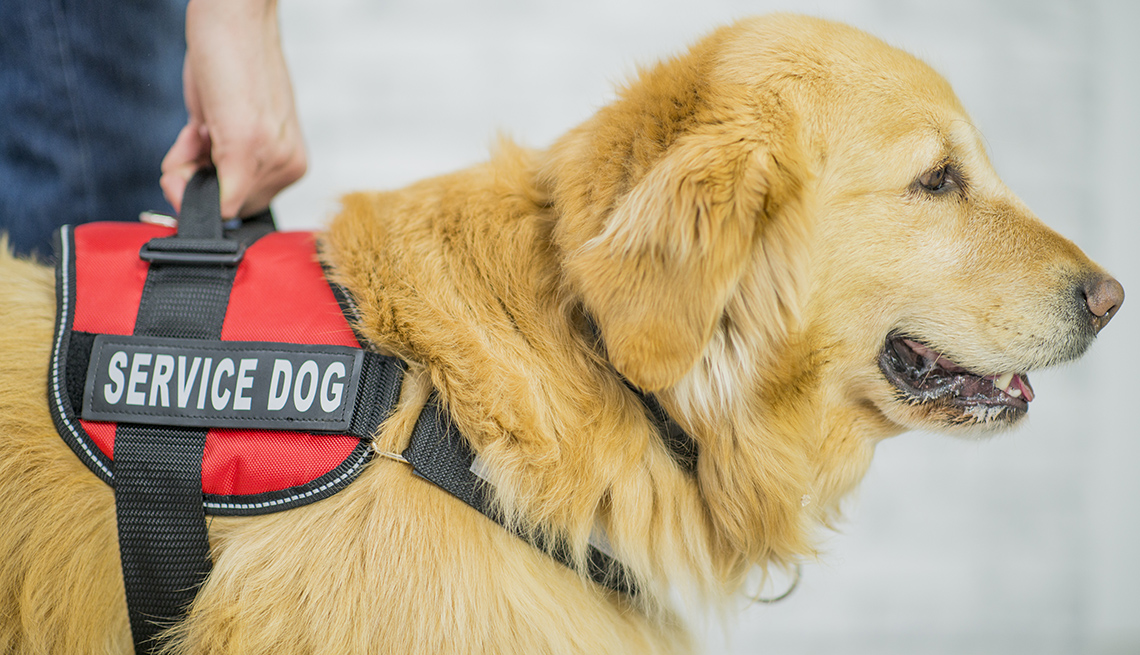AARP Hearing Center
Gone are the days of monkeys, pigs and turkeys joining passengers — and sometimes causing havoc — as emotional support animals on flights.
The Air Carrier Access Act, the federal law that requires airlines to accommodate service animals at no extra charge, now defines a service animal as “a dog that is individually trained to do work or perform tasks for the benefit of a person with a disability.”
The new definition, which went into effect in January 2021, points to two major changes. Under the new regulations, emotional support animals do not need to be accommodated as service animals by airlines, although they may still be allowed onboard as pets. Other species, such as miniature horses and cats, no longer qualify as service animals either.
Another major change? Pre-flight paperwork. The Department of Transportation (DOT) developed two forms that passengers can be required to submit up to 48 hours before their travel date: One attests to the service animal’s training, health and behavior; the other confirms that the animal can avoid relieving itself (or can do so in a sanitary manner) on flights eight hours or longer.
But the new paperwork, which was developed to ensure that service animals onboard are trained and legitimate, has posed an “added burden” for passengers with disabilities, says Rabih Dow, director of outreach and advocacy at Guide Dogs for the Blind, a leading guide dog training school.
“Passengers with visual impairments are most impacted, since airlines present and require the forms to be saved in different ways on their websites,” he says. “Airline websites are not uniformly accessible, and some are too difficult to navigate with adaptive technology.”
Dow, who is blind and travels with a guide dog, says that the travel process now takes him “much longer” than before the updated guidelines were introduced. He also has to manage anxiety that his forms could be rejected, preventing him from flying.
According to the DOT, the new regulations were developed in part to address the problem of pets being fraudulently brought onboard as service animals, misbehavior by emotional support animals on flights and the disruption caused by passengers requesting to fly with unusual animal species. The updated guidelines say these instances “eroded the public trust in legitimate service animals.”



































































